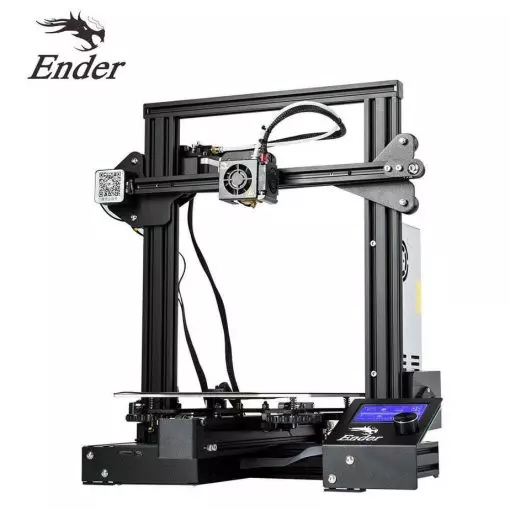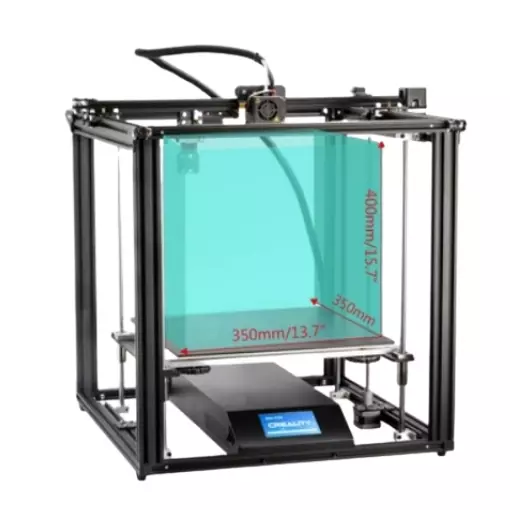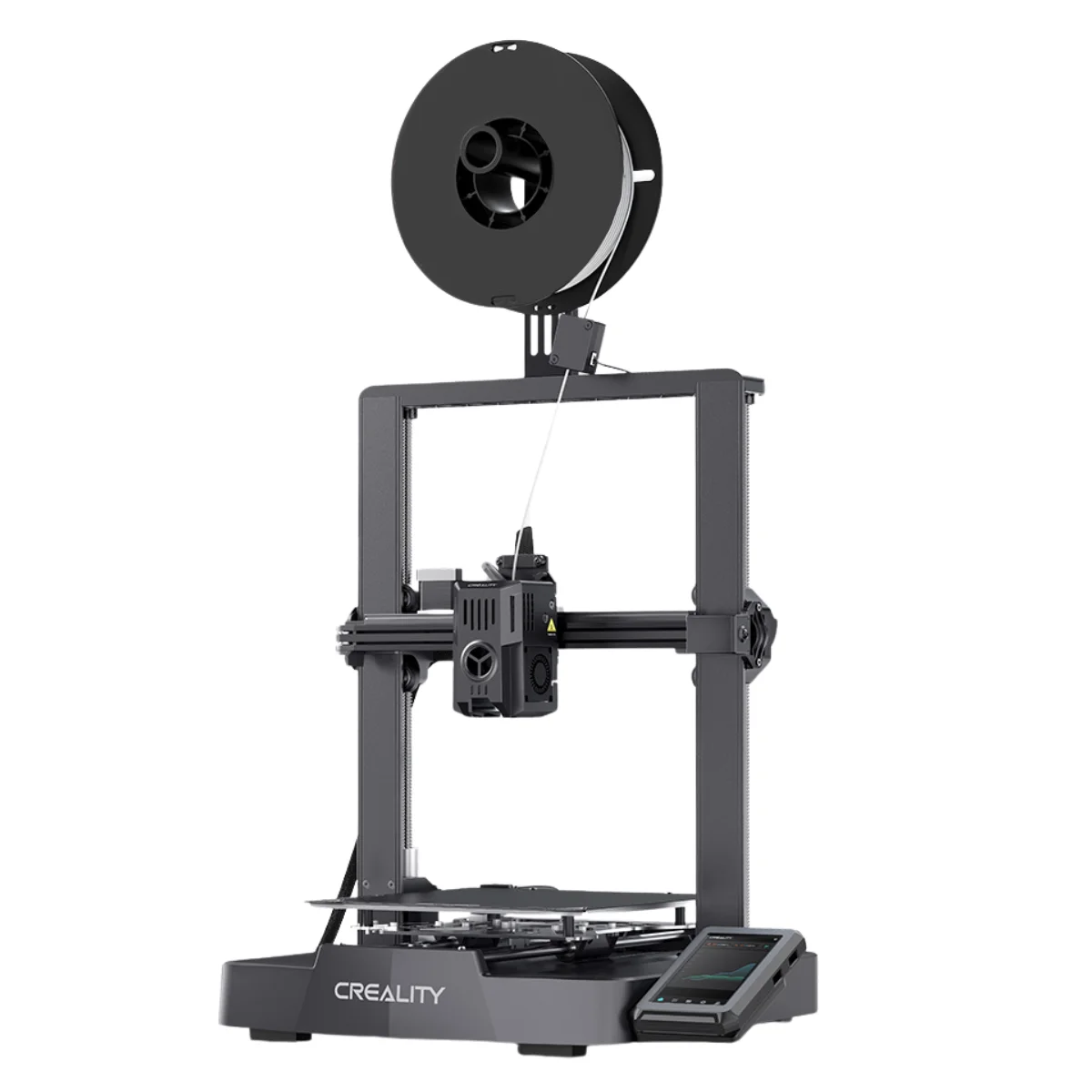Compare Ender 3 vs Ender 5 Plus vs Ender 3 V3 KE
Comparison between the best 3D printers
Choose the best 3D printer at the best price. The cheapest 3D printers are here.
Buy a 3D printer here with 3D Fila.
 |
 |
 |
|
| Model | Ender 3[BUY Ender 3] |
Ender 5 Plus[BUY Ender 5 Plus] |
Ender 3 V3 KE[BUY Ender 3 V3 KE] |
| Printing Material | Filament | Filament | Filament |
| Estimated price | $210,00 | $599,00 | $279,00 |
| Fabricante | Creality 3D | Creality 3D | Creality |
| Release Year | 2018 | 2019 | 2023 |
| Print Volume [mm] | 220x220x250 | 350x350x400 | 220x220x240 |
| Printer Size [mm] | 440x440x465 | 632x619x666 | 433x366x490 |
| Weight [kg] | 6,62 | 18,2 | 7,8 |
| Power Loss Recovery | NO | YES | YES |
| Enclosed printer | NO | NO | NO |
| Bed Leveling | Manual | Automatic | Automatic |
| Filament End Sensor | NO | YES | YES |
| Bed type | Heated | Heated | Heated |
| Power supply system | Bowden | Bowden | Direct Drive |
| Standard nozzle | 0,4 | 0,4 | 0,4 |
| Maximum Nozzle Temperature [°C] | 255 | 260 | 300 |
| Maximum Bed Temperature [°C] | 110 | 100 | 100 |
| Maximum printing speed [mm/s] | 180 | 180 | 500 |
| Filament holder | YES | YES | YES |
| Camera for supervision | NO | NO | NO |
| Recommended filaments | PLA, TPU, ABS, PETG | PLA, TPU, ABS, PETG | PLA, PETG e TPU (95A+), ASA |
| Recommended slicers | Cura, Simplify, Slic3r | Cura, Simplify, Slic3r | Creality Print, Cura 5.0 ou superior, Prusa Slicer, Orca |
| Maximum Resolution [mm] | 0,1 | 0,1 | 0,1 |
| Processor | 8 bits | 32 bits | 32-bit Silenciosa |
| Display | Mono | Touchscreen TFT 4,3'' | Touchscreen 4,3'' |
| Power Supply | 24V / 270W | 24V / 504W | 350 W |
| Connectivity | SD / USB | SD / USB | USB drive, LAN, Creality Cloud APP |
| Operating systems | Windows, Mac, Linux | Windows, Mac, Linux | Windows, Linux, Macbook |
| Date of registration in the system | 2021-04-13 | 2021-04-14 | 2024-03-06 |
| Release date | 2018 | 2019 | 2023 |
| Extra features | The Ender 3 V1 is a DIY assembly 3D printer, a sales leader since 2017, standing out for its cost-benefit. With a wide printing capacity, it has a CNC machined structure for precision and stability. It offers high-precision prints with low noise, thanks to its innovative V-profile and pulleys. It has a self-adhesive magnetic platform for easy removal of models and excellent adhesion. The Ender 3 heats up quickly, reaching 100°C in 5 minutes, ideal for agile prints. It includes protection against power failures, allowing you to resume printing after interruptions, saving time and material. | The Ender 5 Plus offers a large print volume (350x350x400 mm) and fast assembly. It includes a BLTouch sensor, but with range limitations. It stands out for its dimensional accuracy, although it requires adjustments to the slicer settings. Despite the noise, its integrated design saves space, and includes features such as a filament sensor and power resumption. Ideal for large projects, it requires refinement in the settings for high-quality prints. | The Ender 3 V3 KE, an advancement in the Ender line, achieves print speeds of up to 500mm/s with its touchscreen and WiFi connectivity. Although it has a slightly smaller print area than the SE model, it makes up for it with superior print quality. Its robust design, high-quality components, and intuitive wireless control are appreciated, although Creality's mobile app lacks practicality and does not have a closed system. It stands out for its linear track on the X-axis for stability at high speeds and the hotend that supports up to 300°C, ideal for high-temperature filaments. |
| Support for multiple colors and materials (AMS and CFS) | NO | NO | NO |
Notes * |
|||
| Cost-benefit | 6 / 10 | 6 / 10 | 7 / 10 |
| Hardware | 0.5 / 10 | 2 / 10 | 3.2 / 10 |
| Screen | . | . | . |
| Print volume | 3 / 10 | 4 / 10 | 3 / 10 |
| Performance | 1 / 10 | 1 / 10 | 4 / 10 |
| [BUY Ender 3] | [BUY Ender 5 Plus] | [BUY Ender 3 V3 KE] |
Conclusion |
| In comparing the three 3D printers—Ender 3, Ender 5 Plus, and Ender 3 V3 KE—several key factors distinguish their value propositions, particularly in terms of price, features, and target user experience. The **Ender 3** serves as an entry-level option, offering a solid cost-benefit ratio. It's well-regarded for its DIY assembly and high-precision prints despite its lower print volume and lack of advanced automation features like power loss recovery and automatic bed leveling. This makes it ideal for hobbyists and beginners looking for a reliable printer at a lower price point. Moving up the scale, the **Ender 5 Plus** caters to users requiring a larger print volume and some automated features, such as a filament sensor and automatic bed leveling. While its price reflects these enhancements, it still presents a similar performance level to the Ender 3, particularly in print speed and resolution. However, users may need to fine-tune slicer settings for optimal results, which could be less appealing to those seeking simplicity. The **Ender 3 V3 KE**, the most recent entry among the three, presents a significant step up in terms of speed and modern features, including a touchscreen interface and WiFi connectivity. This printer stands out with its support for high-temperature filaments and a robust design aimed at stability during high-speed printing. This model targets users who demand higher performance and are willing to invest more for advanced capabilities. Ultimately, the choice of 3D printer depends largely on the user's specific needs and budget. For beginners or those seeking a basic yet effective machine, the Ender 3 remains a compelling option. For those needing more size and automated support, the Ender 5 Plus offers a balanced approach. Meanwhile, for users who prioritize speed and advanced features and can justify the investment, the Ender 3 V3 KE represents the best option in terms of performance and future-proofing. Each model has its unique strengths, making it vital to align personal requirements with the appropriate printer choice. |

